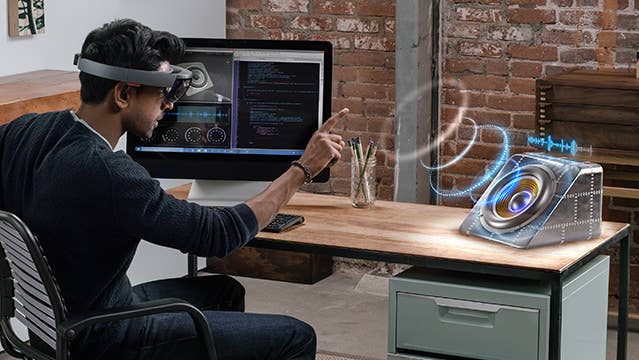Microsoft seeking to control VR/AR ecosystem
Microsoft is inviting other manufacturers to build devices with Windows Holographic
While Oculus Rift, HTC Vive and PlayStation VR compete for installed bases among the early adopter crowd, Microsoft's ambition with mixed reality is far greater. Rather than simply offer the HoloLens product, the company is opening up Windows Holographic to everyone.
"Windows Holographic is coming to devices of all shapes and sizes from fully immersive virtual reality to fully untethered holographic computing. Today we invited our OEM, ODM, and hardware partners to build PCs, displays, accessories and mixed reality devices with the Windows Holographic platform," Terry Myerson, Executive Vice President, Windows and Devices Group, said on the Windows blog.
Microsoft noted that it's already working with Intel, AMD, Qualcomm, HTC, Acer, ASUS, CyberPowerPC, Dell, Falcon Northwest, HP, iBuyPower, Lenovo, MSI and "many others."
According to Fast Company, Myerson said the plan always was to include Windows Holographic with every Windows 10 PC. "I don't think anyone else has expressed as complete an ambition and vision for mixed reality," he said.
Just as Microsoft has been a dominant force in desktop computing with Windows in the business world and at home, the company could be positioning itself to control a mixed reality computing future if its Windows Holographic plans come to fruition. There are already over 300 million devices running Windows 10.
"For our partners, this creates new business opportunities, unlocking mixed reality experiences across devices. For developers, Windows Holographic apps can be written today with confidence that they will run on the broadest set of devices," Myerson said.
"Imagine wearing a VR device and seeing your physical hands as you manipulate an object, working on the scanned 3D image of a real object, or bringing in a holographic representation of another person into your virtual world so you can collaborate. In this world, devices can spatially map your environment wherever you are; manipulating digital content is as easy and natural as picking up a box or sitting at a table; and you can easily teleport into your next meeting or travel together as a team," he continued.
"The market for virtual reality devices is expected to be 80 million devices per year by 2020. However, many of today's devices and experiences do not work with each other, provide different user interfaces, interaction models, input methods, peripherals, and content. And most virtual reality experiences can't mix real people, objects, and environments into the virtual world, making creation and collaboration difficult. This is because they lack the human, environmental and object understanding that is already built into Windows 10."


